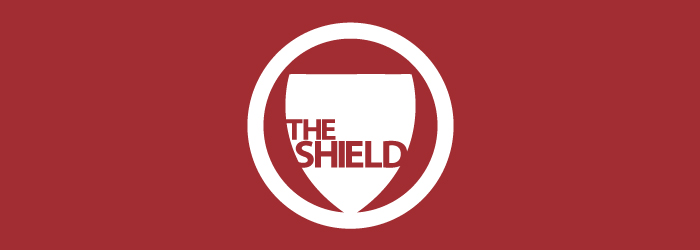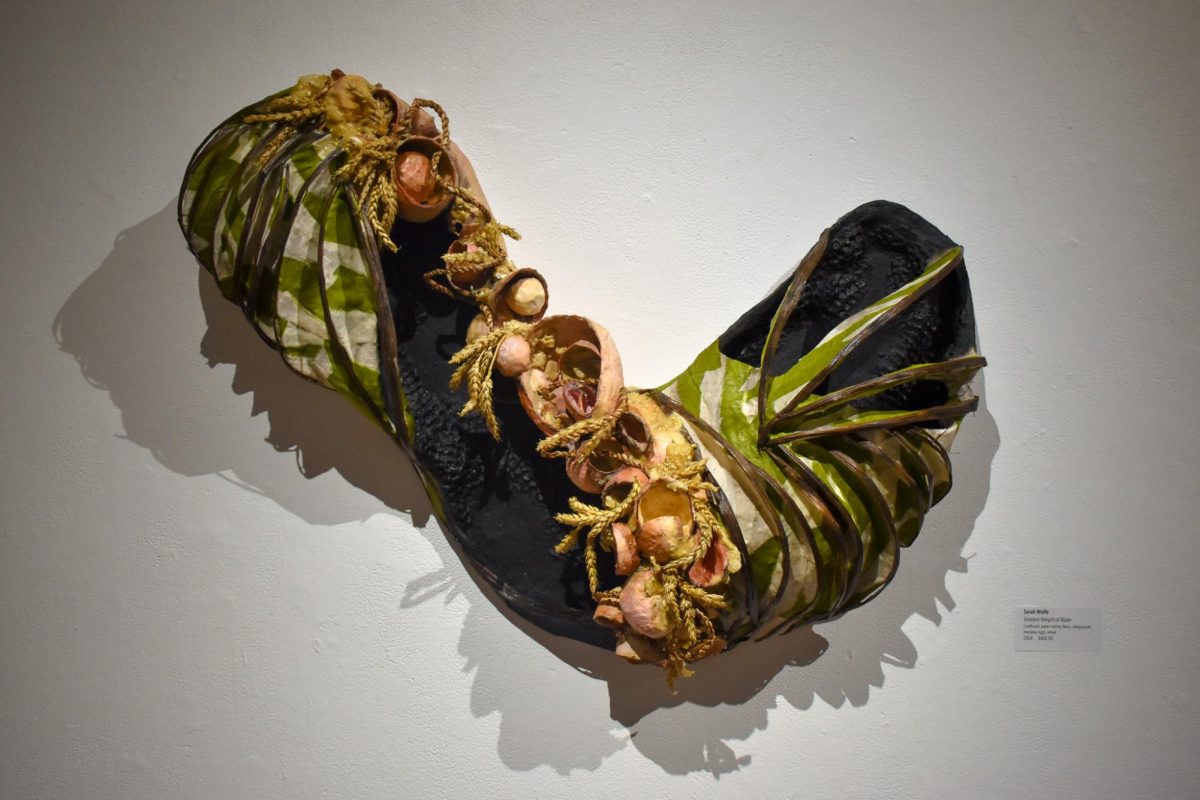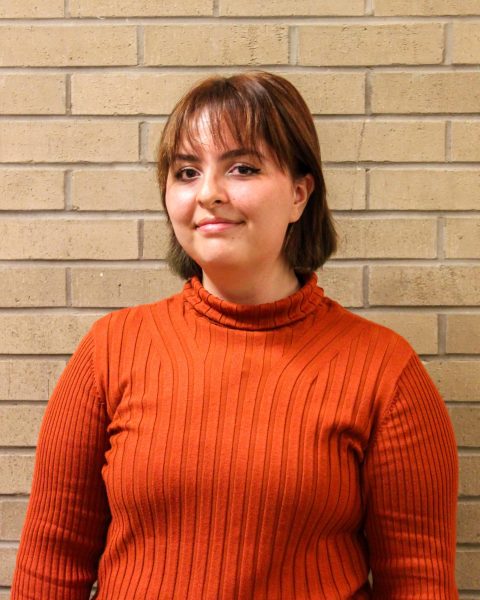Sarah Wolfe is an artist based in Vincennes, Indiana. Last year, she worked for the city of Vincennes and Knox County as an eclipse director. What she observed then inspired her current exhibition, “Opusilva: Woodland Works.”
“I noticed along that year that people were really disengaged from the natural world around them,” Wolfe said. “It seemed like something that could be addressed through this future work that I was planning in my head once this job was done.”
“Opusilva,” a word she invented by combining “opus,” which means work, with “silva,” which is Latin for forest or woods, will be on display in the Shirclif Gallery of Art until Friday.
Wolfe said she has always enjoyed working with natural materials. She explained that they are free and readily available.
“I don’t like having to engage with a whole lot of capitalism through my creative practice,” she said.
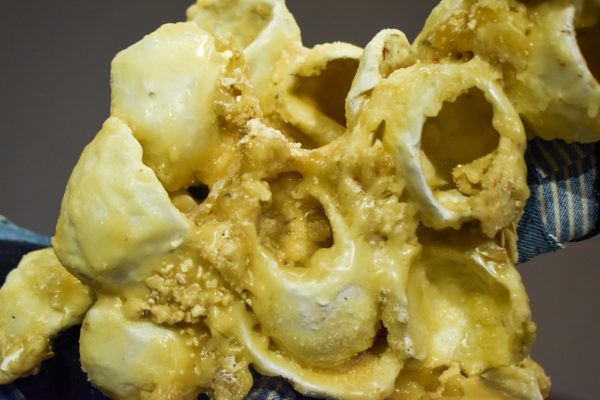
One constraint she mentions is the growing season of the materials she works with. For example, Wolfe enjoys working with dried okra. Because she needs bigger pieces to work with, she grows it herself. She purchases other materials, like beeswax.
Another constraint is the ephemeral nature of her materials.
Wolfe said she makes her structures as sturdy as possible, “but people have to understand that they do eventually break down.”
“One of the recurring themes in my work is about preservation,” Wolfe said.
Although she occasionally uses sealant and glue, she uses it as little as possible, preferring traditional preservation methods like salt and beeswax.
“That’s part of the conversation about these pieces,” she said. “We try to preserve our memories and our lives and the environment, the world around us, but it’s all futile.”
“None of it’s going to last,” Wolfe said.
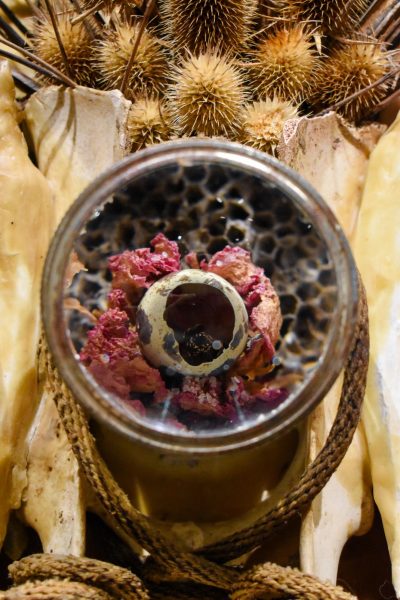
Wolfe said her pieces that feature magnifying glasses are about fragility.
“We treat life as this precious, delicate thing, and we try to hold onto it, and we try to preserve it, and we can’t,” she said.
These concepts of futility and preservation seep into every artwork in this show, unifying them.
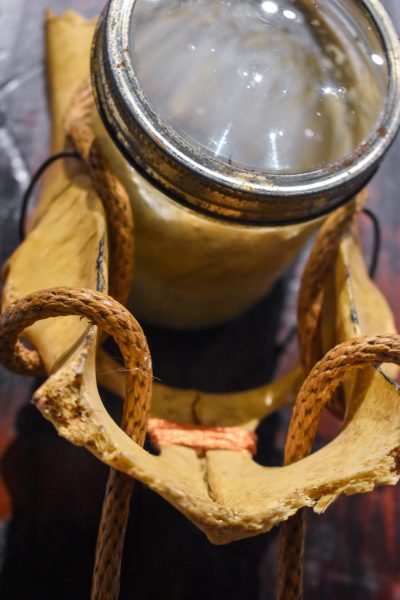
Although Wolfe has previously worked with bone, she has since moved away from this medium because she felt that people were more focused on the bone than on the work itself.
“People would attach too much importance to that, and I didn’t like that,” Wolfe said. “I use them because of their shape or their texture or their form, and people seemed really attached to the idea that I was obsessed with death, but I’m not really.”
She recalled conversations that she had with hunters about her art.
“I ended up having really weird conversations with hunters,” Wolfe said. “I felt like people thought I was a super goth, macabre person, and I don’t feel that way. I didn’t really like that narrative.”
While there are bones in “Opusilva: Woodland Works,” the majority of the show features nonrepresentational abstract works.
One exception to this is the work “Nest,” which depicts a bird’s nest with eggs in it.
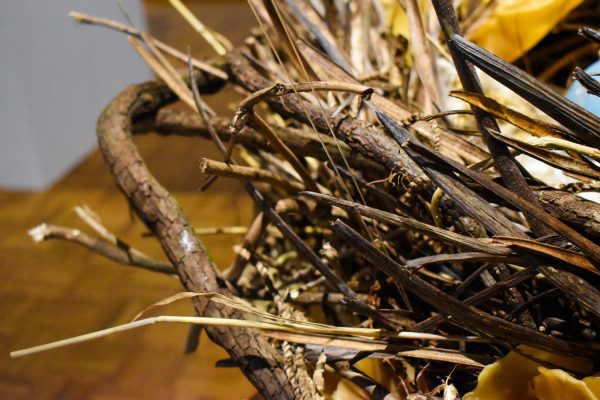
Wolfe said “Nest” tends to resonate with viewers who appreciate nonabstract work because they can recognize what it is.
She said people tend to be uncomfortable when they see things that they cannot recognize, even if they may find the artwork aesthetically pleasing. One of her goals with this show is to create a place where people can come and sit in that discomfort.
“We live in a place where a lot of folks feel like art isn’t for them,” she said. “It makes them feel stupid. It makes them feel uneducated, and I don’t ever want anybody to look at my work and feel that way. I want them to know that it’s okay to not have an opinion at all. It’s okay to just like it.”
She concluded that the viewer’s reaction is what is most important to her, even if it’s negative.
Given that her work is so intrinsically tied to nature, Wolfe is exploring creating outdoor installations in the future.
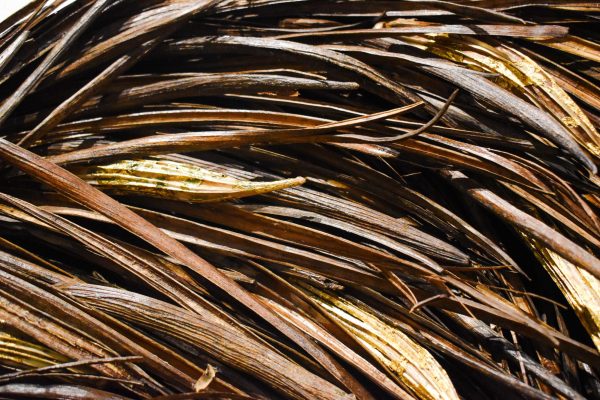
“For a lot of communities, people of color, Black folks, a lot of public spaces, green spaces, actually aren’t often that safe for them to be in,” Wolfe said.
One of her motivations behind creating outdoor artwork is so that “nobody has to question if they belong there.”
Another is that many people might feel uncomfortable going to a gallery.
“Everybody has those moments of ‘Well, I don’t go to galleries; that’s something that rich people do, or it’s something that people with a degree do,’” Wolfe said. “I don’t have either of those things. It really is for everybody.”
Looking toward the future, Wolfe recognized that in turbulent times, many artists might not want to make art because they might think that it’s not worth doing. However, she disagreed.
“Whenever we are in times of uncertainty, we need art more than ever to remind us of who we are,” she said.
For those interested in seeing more work from Sarah Wolfe, her Instagram is @commonfinish, and her website is Sarah Wolfe.
